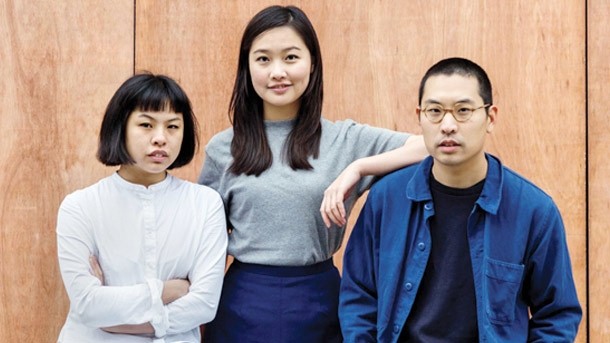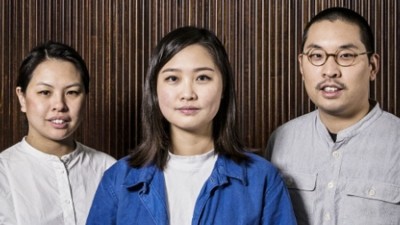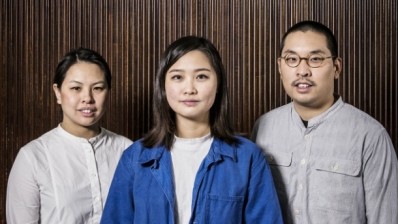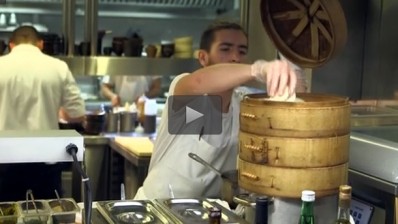SMALL TALK
Shing Tat Chung of Bao London on turning a street food stall into a permanent restaurant

what’s the secret to Bao’s success?
I’d put it down to paying close attention to detail across all aspects of the operation. A lot of street food people are good at some things – for example cooking great food – but let other aspects slip, such as branding and marketing. Our decision to offer Taiwanese food also helped. There are only a handful of Taiwanese restaurants in the UK so people see it as something new and exciting.
there’s three of you behind it...
There’s myself, my sister Wai Ting Chung and my partner Erchen Chang. Erchen is from Taiwan and Wai and I are from Nottingham, but our parents are originally from Hong Kong. Erchen and myself are the cooks and Wai Ting oversees front of house.
Are you new to the restaurant business?
Not exactly. Wai Ting and I grew up in the business. Our parents run Cantonese restaurants in Nottingham; they’re actually in the process of retiring. There was a lot of emphasis placed on our studies when we were younger because our parents did not want us to have to follow them into the business, but it seems to be in our blood.
How did Bao begin?
Erchen and I met at University College London and we went on several trips to Taiwan and did a lot of eating there. We teamed up with my sister to launch Bao in 2012 at KERB (a London-based street food collective) but we’re now based in a semi-permanent location at Hackney’s Netil Market. We’ve also done some event catering and pop-ups.
You’re backed by the team behind Gymkhana and Trishna. How did you get involved with the Sethis?
I think Karam was the first to stop by and we got talking about the possibility of working together. It happened quite naturally. Karam, Jyotin and Sunaina [the Trishna Group team] have given us a lot of advice and support. It’s not just about the money, although that has obviously been instrumental in getting the restaurant off the ground. The support the Sethis have given us with property selection, project management and EPoS systems has been particularly useful to us as first-time restaurateurs.
Tell us about the concept
The food is broadly similar to what we serve in Hackney. Our core dish is the classic bao, which contains braised pork, peanut powder, coriander and fermented mustard greens, which we cook in lard. We make the buns using a starter that we mix with milk, flour, water and a few other bits before steaming, which gives them a light, fluffy texture. The pork that makes up the bulk of the filling is comparable to the classic Chinese dish red braised pork and is made with soy, sugar and spices.
Is it an authentic take on bao?
Yes. The recipe is based on a dish called gua bao, which you’ll find in Taiwan. We play around with some of the other dishes. We do a bao with lamb shoulder and one with panko-crumbed daikon. The menu also includes lamb tongue fries with curry dip; battered sweet potato with plum pickle salt; and fried chicken marinated in soy milk, served with our own hot sauce.
A few people are already serving bao and hirata buns in London...
We think our versions are the real deal. To some extent the dish has lost its identity. It’s now seen as a pan-Asian thing but it’s actually specific to Taiwan. Bao is big business in the US since David Chang (the Korean American chef behind Momofuku) started selling what he describes as pork buns.
Would you and Erchen Chang describe yourselves as chefs?
Like a lot of people that have come from the street-food world, we’re not really chefs. We just cook. Our development process tends to take longer because we have to work harder to get it right. We want to create food we’re happy with and that means lots of trial and error to get it to where we believe it should be.
How’s the restaurant looking?
It was a Soho bistro and we only have 30 covers, which suits the style of operation because we expect to have high table turn at lunch. We want it to be fun and casual. I’ve designed the site (Tat completed a masters in design at The Royal College of Art) working with Royffe Flynn architects. It has a stripped-back look with lots of wood and enamel pendant lights. We’re going to display our house-made pickles prominently, which include the aforementioned mustard greens and our Taiwanese golden kimchi.
What about takeaway?
About 90 per cent of our business in Hackney is takeaway. The plan is for the Soho restaurant to be eat-in focused but we will also offer a low-key takeaway service. Eat-in and takeaway diners will order food on dim sum-style tick box menus and we anticipate spend per head to be between £10 and £15 at lunch, and £20 to £25 at dinner. We’re anticipating people will stay longer because we have a great range of interesting drinks including Japanese and Taiwanese whiskies, Taiwanese beers and hot oolong and cold foam tea.
Any more Baos on the horizon?
We’re going to continue to operate the site in Hackney so right now that’s more than enough to keep us occupied. The focus is on getting the new one right because it’s new territory. It’s all happened very quickly so we have to take each day as it comes.























